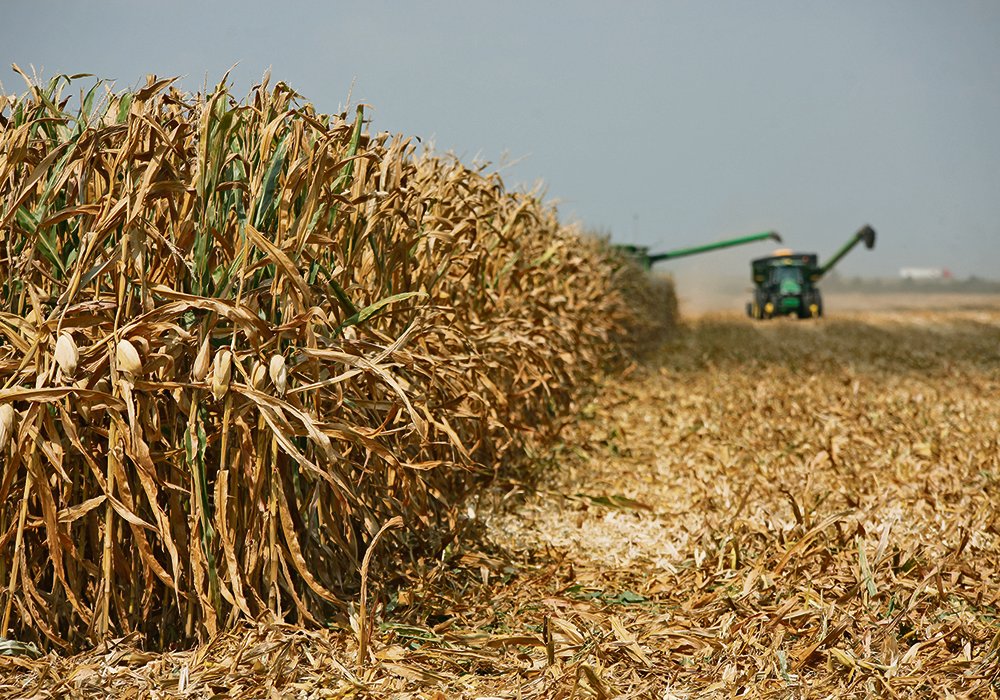Renewable fuel’s need for corn still has major effect on prices, but broken supply chains seen as bigger cause this time
The push and pull between using crops for food versus converting them for biofuel hasn’t hit the levels of the first decade of this century when sky-high oil prices saw the allure of the latter drive commodity prices higher.
Corn prices are once again pushing up at a time when the need for feed is growing due to drought conditions taking a toll on forage across the western half of North America and as oil prices begin to climb. However, the correlation between food and fuel isn’t so clear.
Read Also

Russian wheat exports start to pick up the pace
Russia has had a slow start for its 2025-26 wheat export program, but the pace is starting to pick up and that is a bearish factor for prices.
Gal Hochman, agricultural economics professor at Rutgers University in New Jersey, has written extensively on the effects of biofuel production on commodity prices over the past two decades.
From his perspective, the market dynamics are different now from when corn pushed north of US$8 per bushel in 2012.
“It’s simply that supply chains are broken,” said Hochman. “Transportation is spiking like crazy.”
Those additional costs as well as the cost of labour rising as manpower becomes scarce is also seeing commodity prices rise as producers pass on the additional financial burden to purchasers, he added.
“Disruptions result in supply not meeting demand,” said Hochman.
The effects of biofuel’s need for crops could change as oil prices rise.
But currently, Hochman said that doesn’t appear to be the case as corn prices rise.
“I don’t think biofuel exasperates it and beyond that, there is a push for other forms of feedstocks for biofuels,” he said. “So, corn right now isn’t really expanding too much. But as prices change, farmers will respond.”
Danny Le Roy, a University of Lethbridge associate professor of agricultural economics, said whether you’re a purchaser or a seller makes all the difference on how you view rising commodity prices.
“Let’s say the biofuels market vanished. What happens to the price of corn now that five billion bu. are available for other uses,” said Le Roy.
Cleaner fuel standards introduced in the early 2000s, which drove the market for corn to make into ethanol, was a boon for growers.
“It was in that time period — 2006, 2007, 2008 — where commodity prices doubled at least and it’s because of the increase in demand for corn for fuel,” said Le Roy, adding that had a knock-on effect on other commodities as buyers looked for less expensive alternatives.
It also saw agricultural land prices rise.
But high corn prices mean more acres planted, said Le Roy, which in part is why the crop is available for feed in Western Canada after growers in Eastern Canada and the American Midwest came up aces with this year’s harvest.
“Corn prices actually put a ceiling on feed prices in Western Canada because at some point, despite the fact that so much corn is being used to manufacture ethanol, another lucrative end point of it is feeding cattle,” said Le Roy.
While the benefits and consequences of higher feed prices are being felt in the short term, depending on which side of the equation someone is on, there is an issue of long-term impacts of use of crops for fuel, according to Le Roy.
Specifically, the use of government regulations, which have spurred the biofuel market, can drop the bottom out of commodity prices as fast as it boosted them.
“Rather than responding to market signals, producers are responding to a rather distorted signal generated by an amalgam of government programs and the purchasing of consumers,” said Le Roy. “A policy can be changed at the stroke of a pen.”
Hochman said there is another dynamic that wasn’t fully in the mix during the North American corn-for-fuel rise in the early 2000s, which makes the current situation different — electrification of the transportation sector.
“We’re still very far from the goals we’ve set, but electrification will overshadow any effects of biofuels,” he said.
At the same time, producers will continue to see demand high as the need for food and feed continues to rise.
Outside of North America in developing countries, the biofuels market will likely continue to be part of the transportation energy mix, added Hochman, because those countries don’t have the infrastructure to realize electrification.
Within North America, aviation will continue to require traditional fuels, which will also be an alternative market for biofuels, said Hochman.
















